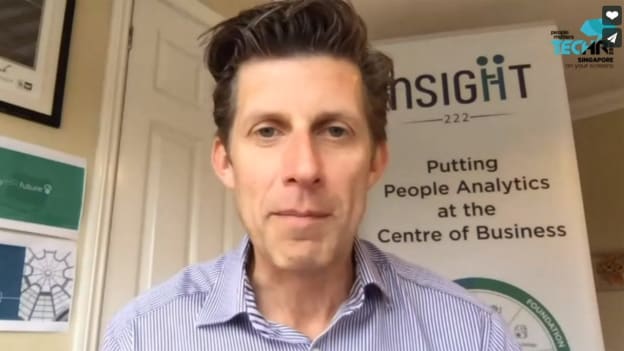People analytics: finding people solutions to business questions

People analytics is the fastest-growing area of HR today, driven in large part by the COVID-19 crisis. Even before the pandemic, it was already one of the trends most emphasized by HR professionals as important to the future of HR, second only to employee experience. And when COVID-19 hit, business leaders began leaning increasingly heavily on people analytics as a solution to many of the problems they face, according to David Green, Managing Director of The People Analytics Program at Insight222.
"People analytics teams are increasingly being responsible for workforce planning, design, and experience," Green said. Giving the keynote speech on the third day of People Matters Tech HR 2020, he observed that people analytics teams have been growing even where the overall HR head count is shrinking, and that the scope of the work they do is expanding into areas such as strategic workforce planning and designing employee experience.
The growing reliance on people analytics
"It's now widely recognized by business leaders and HR professionals that people analytics can drive performance," said Green, pointing out that 69 percent of large organizations now have a people analytics team and that there has been a huge influx of related skills into HR roles—over the last five years there has been a 242 percent increase in the number of HR professionals including data analysis skills in their LinkedIn profiles.
Quite simply, data and the ability to make sense of that data is needed for the future evolution of the HR function. Out of six imperatives that the World Economic Forum cites for HR moving into the 2020s—developing new leadership capabilities, enabling agile learning, enhancing employee experience, and even embedding diversity and inclusion—all need data to accomplish.
And, of course, there is the pandemic: "The chief HR officer is at the center of the organization's response to the crisis," said Green. "The consistent message i hear is 'I've never been so busy, my work has never been elevated so high in the organization relative to the CEO.'"
People analytics has a role to play in each of the three stages of the crisis, according to Green. Firstly, the respond stage, where organizations focus on employee safety and business continuity: this involves bringing HR data together with external data to understand the immediate impact and how best to mitigate it. Secondly, the recover stage, where employee safety and wellness is intertwined with enabling remote working: this involves gathering and acting on data around employee needs. And finally, the reimagine stage, where organizations have to decide how they want to proceed in the next normal: here, organizations need to use their data to understand the implications for innovation and productivity as they plan for the workplace of the future.
What allows people analytics to really bring out business value?
Often, people analytics is put to relatively limited use. But correctly applied, it can boost profitability to enormous extents, sometimes from very unexpected angles.
One factor that allows such application is having the right business sponsor within the organization. Green shared the example of Swarovski's solution to first-year attrition in its UK retail stores: it was viewed as a HR problem and therefore led by the HR function, which had analyzed several measures to reduce staff replacement costs by improving retention. However, the people analytics team also took their findings to the head of Swarovski's UK retail business, who asked a completely different question: whether this could affect customer conversion. This prompted the team to analyze the data further, and they found correlations between customer conversion and metrics such as store staffing and training, manager attributes, and even pay rises. They reported these finding to the Swarovski board, who then pushed for the findings to be integrated into corporate strategy—essentially turning a project on HR cost savings into a multi-million euro business sales program.
A second factor, Green suggested, is the ability to break down siloes and cross-reference business data with HR data. In another case study he shared, the people analytics team at the National Australia Bank pooled their data and resources with the consumer analytics team to identify the key elements of employee engagement and the factors that had a knock-on effect on customer profitability.
A third factor is the ability to gather data consistently and comprehensively. For example, Green pointed to how senior managers at Rabobank used regular surveys and other listening techniques, continuously shaped and adjusted, to build a better understanding of employee well-being and thereby plan for the workforce of the future.
"People analytics can and has contributed hundreds of thousands of dollars to the top and bottom line of the team," he observed.
What HR professionals can do to get better at people analytics
There is a huge opportunity for organizations and HR professionals themselves to become more familiar with people analytics, according to Green, and in fact Insight222's research has found that people analytics is the top skill HR professionals want to develop. And for those who are determined to become people analysts, there are a few skills to consider: data gathering and cleaning techniques, analysis methods, how to package and present the results
But, he said, that doesn't actually apply to most HR professionals. "Most of HR don't need to become data scientists," he pointed out. "What most HR professionals need to improve their skills in is around understanding the business, understanding the key challenges facing the business, understanding what the people factors of that are, and framing business questions into hypotheses which can be tested by people analytics."
Armed with the resulting insights, HR can present a compelling case for action to business leaders, help the business take those actions, and even measure the outcomes. Green said:
"This is not about HR. It's very much about business issues."














